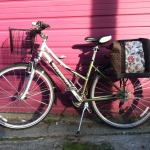Search Results
-
What is Xylene, and What Does it Mean for Puget Sound?
It’s a safe bet that most people have no idea what C6H4(CH3)2 refers to. It’s a chemical compound that is better known—when it is known at all—as xylene, a niche product of oil refining soon to go into development on the shores of Puget Sound. It’s a change that has potential implications for the health of the Salish Sea, for oil trains, and perhaps even for gasoline prices. Because most...Read more » -
What Has Sightline Ever Done for You?
That’s a photo of my little sister, circa 1990, with exactly the kind of “HUH?!” face I have every time I realize another year has gone by. Yep, it’s time again for Sightline’s annual audience survey. This year, we’ve cut it down a mere 10 questions, because we know you’re pretty busy (though of course, additional feedback is welcome any time). AND you could win $50 to REI or Powell’s Books....Read more » -
Which Way to Clean Industrial Stormwater?
Industrial companies—metal recyclers, printing plants, rail yards, petroleum refineries, and the like—have a smaller footprint on the land compared to residential areas and other businesses. But when rainstorms flush runoff from industrial sites, that contaminated stormwater can carry a toxic cocktail with an outsized impact on lakes, bays, and other sensitive waterways. So the effort to clean up Puget Sound, to make it hospitable to marine life and safe for...Read more » -
Weekend Reading 11/21/14
Clark A new report from Frontier Group and TransitCenter makes a provocative (and almost certainly true) point: federal tax policy subsidizes traffic congestion. The IRS lets employers offer their employees a tax-free parking subsidy of up to $250 per month—which, by the report’s estimate, boosts national rush-hour traffic by roughly 820,000 vehicles per day. Worse, the tax subsidy for parking focuses the benefits on upper-income Americans—the very people who need...Read more » -
A Mom Rediscovers Her Bike
Editor’s Note 5/3/16: Does the record-warm spring have you craving to hop back on your bike… but still a bit nervous to navigate busy city streets? In this popular article, former Sightliner Jennifer Langston shows how you can get around on neighborhood greenways, a network of family-friendly roads. Read (and ride) on! I haven’t used a bike to get across town in six years. I know because that’s how long it’s been since...Read more » -
Weekend Reading 10/17/14
Editor’s Note: Recently, we invited board members to contribute to weekend reading when they like. Chris Troth took us up on the offer this week! And our fall communications intern, Keiko Budech, also added a couple pieces to this weeks picks—enjoy! Alan This article, which filled my heart with happy, is about librarians on cargo bikes in Portland who deliver customized reading piles to people who live outdoors. “Street Books...Read more » -
A Fair Share of Streets (Part 2)
In my last post, I took a look at streets that have been designed specifically so kids and cars can safely share space. That’s most definitely not the case on streets like this one, where a seven-year-old Seattle girl last week was critically injured by a car that hit her in a crosswalk, never even braked, and left her lying in the street. A bold experiment in Portland last week...Read more » -
A Fair Share of Streets (Part 1)
One takeaway from my last post on Portland’s courtyard housing competition was that it makes little sense to squander large chunks of scarce urban land by designing them exclusively for cars. Parking spaces, driveways, and even low-volume residential streets that sit empty most of the day are simply a waste of valuable real estate in growing cities. So Portland legalized the shared court—a common area in a residential development where...Read more » -
Zoning Part Two: Exclusionary Zoning’s End
As we pointed out yesterday, inclusionary zoning (IZ) ordinances—rules that encourage private developers to provide some housing to lower-income tenants at below-market rates—were largely a reaction against “exclusionary zoning” practices that made it hard to build low-cost housing in many municipalities. Starting in the early 1970s, hundreds of cities and towns across the United States began to adopt IZ policies. This raises a key question: how effective have these programs been in boosting the supply of affordable housing,...Read more » -
Zoning: Inclusionary v. Exclusionary
At last count, Seattle ranked as the fastest growing major city in America. The city’s growth has easily outpaced the projections of its decade-old Comprehensive Plan, which foresaw 47,000 new households (as well as 84,000 new jobs) between 2004 and 2024. Between 2005 and 2012 the city added 29,330 net new housing units—roughly 62 percent of its 2024 target in just 7 years. This rapid growth has stemmed in large part from...Read more »









